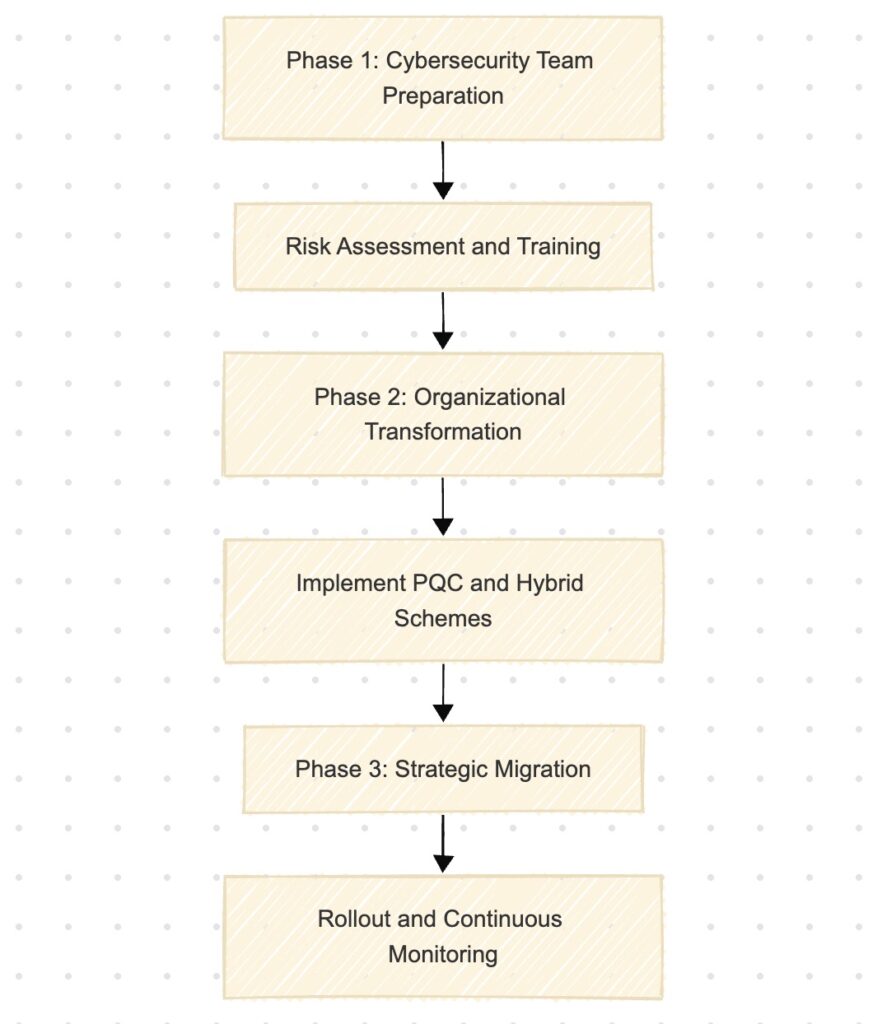6. Practical Applications in Engineering
Quantum computing’s potential in engineering goes beyond theoretical simulations, extending into practical applications that may redefine problem-solving across several domains. A prominent example is the simulation of complex chemical reactions, such as the calculation of energies involved in molecule formation—an area of critical importance for industries ranging from energy to agriculture.
6.1 Simulating Complex Chemical Systems
One illustrative example is the simulation of the iron-molybdenum (FeMoco) complex—the active site of the nitrogenase enzyme responsible for synthesizing ammonia. Classical computing approaches struggle with the immense computational complexity of such systems, often requiring trillions of bits to approach a solution. In theory, an error-corrected quantum computer with millions of qubits would significantly reduce the time required for such calculations, presenting a revolutionary shift in chemical engineering processes. However, it is important to note that achieving this level of robustness in quantum hardware remains a long-term goal, likely spanning several decades.
6.2 Enhancing Engineering Design and Simulation
Beyond chemical reactions, quantum computers are poised to enhance engineering design through superior simulation capabilities. For instance, in aerospace and automotive industries, quantum simulation can optimize fluid dynamics models and structural integrity assessments, leading to more efficient and robust designs. Digital twin technologies can also be incorporated, where quantum-enhanced simulations provide real-time predictive insights for complex, high-dimensional systems.
Table 3: Engineering Applications Enabled by Quantum Technologies
| Engineering Domain | Potential Quantum Application | Expected Benefits |
|---|---|---|
| Chemical Engineering | Simulation of catalytic reactions (e.g., FeMoco) | Reduced energy consumption and improved catalysts |
| Aerospace | Fluid dynamics and structural optimization | Enhanced design efficiency and safety |
| Automotive | Route optimization for autonomous vehicles | Increased fuel efficiency and reduced costs |
| Materials Science | Modeling of novel materials properties | Development of high-performing, greener materials |
Table 3: This table outlines various engineering domains where quantum computing can drive practical innovation, detailing specific applications and anticipated advantages.
6.3 A Realistic Timeline for Engineering Applications
The current consensus from experts is that quantum computers capable of delivering industry-relevant results for complex engineering problems are not imminent. While there is significant research and promising prototype implementations, practical, large-scale quantum solutions for engineering simulate problems—such as the precise calculation of molecular energies or advanced optimization tasks—may be realized only after several decades of continued R&D and hardware improvements. Despite these challenges, targeted advances in quantum simulation and hybrid computational models offer incremental benefits in the near term, ensuring that engineering sectors can prepare for a quantum-enabled future without waiting for full-scale quantum supremacy.
7. Future Challenges and Outlook
As promising as quantum computing is, it faces a host of challenges that must be overcome to unlock its full potential. These challenges span technical, operational, and cybersecurity domains, all of which require coordinated efforts from academia, industry, and governmental agencies.
7.1 Technical Hurdles
Among the most pressing technical barriers are:
- Error Rates and Decoherence: Qubits are inherently fragile, with high error rates that can lead to decoherence. Significant advances in quantum error correction will be necessary to build reliable, large-scale quantum systems.
- Scalability Issues: Developing quantum processors with millions of qubits is essential for complex applications such as simulating multi-molecule interactions. Current systems, however, are limited to a few hundred qubits at most.
- Hardware Diversity: Multiple quantum computing platforms, including superconducting qubits, trapped ions, and cold atoms, are under active research. Determining which technology will prevail or how they might be integrated into a coherent system remains an ongoing challenge.
7.2 Cybersecurity and Cryptographic Resilience
The imminent threat posed by quantum computing to conventional cryptographic systems necessitates the urgent adoption of post-quantum cryptography. Organizations must quickly deploy migration strategies and hybrid encryption techniques to safeguard sensitive data against future quantum decryption attacks. The widespread implementation of NIST-approved PQC algorithms such as ML-KEM, ML-DSA, and SLH-DSA will be critical for ensuring long-term data security.
Figure 3: IBM’s Three-Phase Migration Strategy for Post-Quantum Cryptograph

Figure 3: The above flowchart illustrates IBM’s recommended three-phase approach to transitioning towards post-quantum cryptographic standards, emphasizing preparation, transformation, and strategic migration.
7.3 Research and Investment Outlook
Substantial public and private investments are driving rapid advances in quantum technology. Initiatives like the European Quantum Flagship and IBM’s roadmap for a fully error-corrected 200-qubit system by 2029 underscore the commitment to overcome current limitations. Continued R&D, interdisciplinary collaboration, and flexible investment strategies are key to fostering a quantum ecosystem that supports both early applications and long-term breakthroughs.
7.4 Policy and Standardization
For quantum computing to deliver its transformative potential, robust policies and standardization efforts are essential. Regulatory bodies worldwide need to coordinate on establishing security standards for post-quantum cryptography and ensuring that technological advances are aligned with national security interests. A balanced regulatory framework can stimulate innovation while mitigating the risks associated with quantum technologies in critical infrastructure.
8. Conclusion
Quantum computing harbors the promise of revolutionizing fields as diverse as cryptography, optimization, simulation, and engineering. Its foundational principles—qubits in superposition, entanglement, and quantum interference—offer the means to solve classically intractable problems, but also introduce significant challenges that demand immediate attention. The dual nature of quantum computing requires that governments and enterprises adopt post-quantum cryptography to secure digital communications and invest in sustained research to overcome hardware limitations.
Key Findings:
- Quantum Fundamentals:
- Qubits, superposition, and entanglement are the core principles driving the advantages of quantum computation.
- Cryptographic Vulnerabilities and Solutions:
- Current asymmetric encryption techniques are threatened by quantum algorithms (e.g., Shor’s algorithm).
- NIST has standardized promising post-quantum cryptographic algorithms (ML-KEM, ML-DSA, SLH-DSA) as part of a hybrid migration strategy.
- Optimization and Simulation Applications:
- Quantum optimization holds promise for specialized problems, though its full advantage over classical methods remains to be conclusively demonstrated.
- Quantum simulation is transforming drug discovery and materials science, despite current limitations in qubit quantity and error rates.
- Engineering and Practical Applications:
- Simulation of complex chemical reactions (e.g., FeMoco in ammonia synthesis) highlights both the potential and the technical challenges awaiting quantum computing in engineering.
- Future Challenges and Investments:
- Technical hurdles such as error correction, scalability, and hardware diversity must be overcome through sustained research and collaboration.
- Coordinated policy initiatives and significant financial investments will be instrumental in transitioning to a quantum-enabled future.
In summary, while quantum computing presents both monumental opportunities and daunting challenges, a proactive approach—combining immediate actions in upgrading cryptographic infrastructure with ongoing investments in R&D—is essential for reaping its full benefits. Organizations that prioritize quantum readiness, security, and innovation today will be best positioned to navigate the transformative era of quantum technology tomorrow.
Source Urls:
https://en.wikipedia.org/wiki/Quantum_optimization_algorithms
https://support.dwavesys.com/hc/en-us/community/posts/4407132941079-Hope-to-solve-a-basic-optimization-example
https://specopssoft.com/blog/post-quantum-cryptography-passwords/
https://www.polytechnique-insights.com/en/columns/geopolitics/cryptography-how-to-protect-yourself-in-the-post-quantum-era/
https://www.ibm.com/think/insights/cios-must-prepare-their-organizations-today-for-quantum-safe-cryptography
https://www.nature.com/articles/s41467-024-46402-9
Quantum Simulation Explained: The Next Big Thing in Advanced Computing
Image credit:
https://newsroom.ibm.com/media-quantum-innovation?keywords=quantum&l=100



 How Mobile Technology Is Transforming Sports Betting Experiences
How Mobile Technology Is Transforming Sports Betting Experiences




